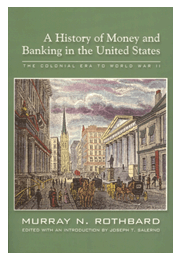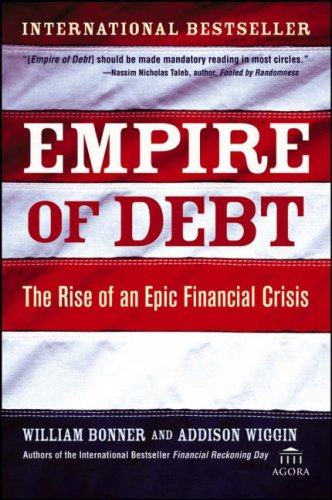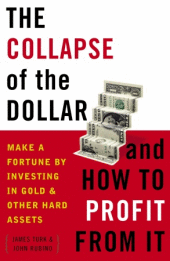 A History of Money and Banking in the United States: The Colonial Era to World War II
A History of Money and Banking in the United States: The Colonial Era to World War II
by: Murray N. Rothbard
In what is sure to become the standard account, Rothbard traces inflations, banking panics, and money meltdowns from the Colonial Period through the mid-20th century to show how government’s systematic war on sound money is the hidden force behind nearly all major economic calamities in American history.
Rothbard employs the Ludwig von Mises’ approach to economic history consistently and impressively throughout the volume to unravel the causes and consequences of events and institutions.
Rothbard reviews the U.S. monetary history, from the colonial times through the New Deal era in a historic and economic view.
One of the important benefits of Rothbard’s unique approach is that it naturally leads to an account of the development of the U.S. monetary system in terms of a compelling narrative linking human motives and plans that often-times are hidden, and devious, leading to outcomes that sometimes are tragic.
“And one will learn much more about monetary history from reading this exciting story than from poring over reams of statistical analysis. Although its five parts were written separately, this volume presents a relative integrated narrative, with very little overlap, that sweeps across three hundreds years of U.S. monetary history.” – From the introduction by Joseph Salerno.
Rothbard could be viewed as an attack dog, with his attitude towards his intellectual opponents. And, some may find a few of the attacks amusing, however childish.
Thoughout the book, Rothbard holds an abrasive attitude towards his intellectual opponents, which adds no value to the theme of his book, nor do his attacks strengthen his arguments. While Rothbard never descended to the level of Lenin’s venomous attacks on his opponents, he still holds a strong opinion against many different ideas.
In addition, Rothbard’s line of books reminds me of the rock band The Who’s line of albums – there is a lot of overlap. (Joseph Salerno, who wrote the introduction to my copy, speaks to this fact.) You can own many of Rothbards ideas by only purchasing a few select books. Rothbard’s works, reprinted and reshuffled over the years. For example, if you’ve read “The Case Against the Fed” you’ve already read part of this book. This is not Rothbard’s fault, but it’s a problem.
With this being said, this book is a terrific read for its look at monetary and financial history of these United States with a jaundiced eye.
Rothbard, who comes across as unbelievably well read, links many of history’s participants around their shared desire to centralize and cartelize banking to the detriment of the working masses.
One example is historians writing about the banking industry’s resistance to centralization, Rothbard explodes that myth for what it is – a myth.
A deep knowledge of economics makes Rothbard almost unique among historians, which is a rare combination, and it’s produced a book that is a fascinating, fun read. Even if I’ve read parts of the book elsewhere.




It really is a great book to read for any investor — both precious metal investor and any other investor alike.